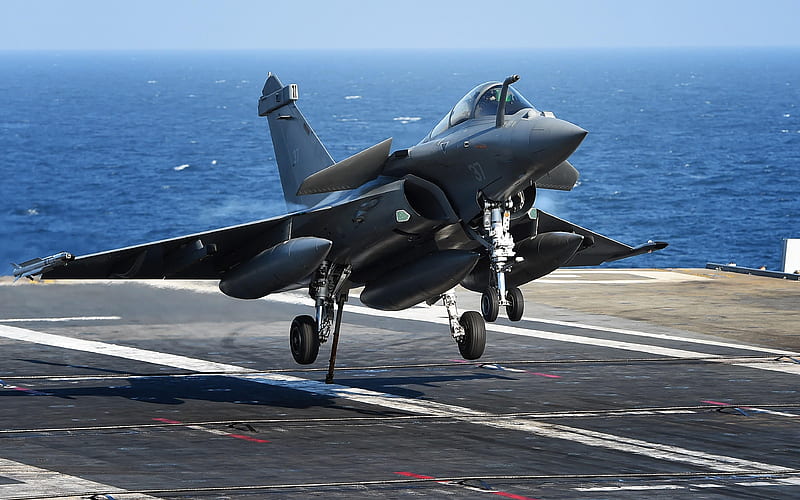How does an aircraft take off and land on a carrier?
By Vedant Dahake
Aircraft carriers have been an important part of any battle. They play a major role in supporting the military of a nation. You must have seen many videos about planes taking off and landing on them but, have you wondered how does that work?

The takeoff mechanism is called catapult. As the name suggests, this mechanism helps an aircraft to attain the required speed for it to takeoff. The runway on a carrier is about 400 feet and on the other hand the regular runway is 2300 feet. The catapult is so efficient that it can make a plane go from 0-150 Knots in just 2.5 seconds! The mechanism consists of steam powered pistons which propels the aircraft to such high speeds. Steam is generated below the deck using the nuclear reactors aboard the ship. The steam is at extremely high pressures. This steam is passed to the pistons ready to launch. Each catapult consists of two cylinders which run the length of the catapult. The pistons have a small metal lug where a shuttle is attached. Shuttle is the part of the catapult where the front landing gear of the aircraft is attached. This pulls the aircraft across the deck. The plane is moved into position on the deck. A towbar in the front landing gear, is connected to the shuttle. Another bar called holdback is positioned between the back of the wheel and the shuttle. Holdback maintains the course of the plane during launch as it could go off course and can cause an accident. When the plane is ready to takeoff the steam is released and the pistons go off at bullet speeds giving the plane just the right speed to takeoff. At the end of the catapult the shuttle disconnects from the plane. The pistons and shuttle are then reverted back to their positions by piston operated by water and are prepared for the next launch. There are 3-4 different catapults for multiple launches.
However, a new catapult mechanism is being developed which uses electromagnetism instead of battle tested steam powered pistons. The new mechanism will reduce the time for preparing a launch from about an hour to just 15 minutes. This will also reduce the amount of fresh water used on the ship. This new technology will use very strong magnets which will travel the length of the catapult. The new Ford class carriers are already equipped with this technology.
The mechanism used to land a plane is rather simpler than the catapult. This mechanism used is Fresnel lens and arresting wires. The landing requires a highly skilled pilot and very good coordination between the ground team. The pilot lowers a tailhook which hangs inches above the surface and will hook one of the four wires helping the plane to decelerate rapidly and stop eventually. The wires are rather simple high-tension wire but, the adjustment of the wire is the one that matters. The adjustments are made according to the weight of the incoming plane. If the weight is too high the plane will come to premature stop which can cause damage to the plane. If the weight is too low the plane will not land and can fall into water.
A good pilot will aim for the 2nd or 3rd wire, this will ensure that the plane does not hit the back of the ship and will have enough space to takeoff again if the plane misses the wire. The pilot accelerates the plane fully as the tailhook is close to a wire, if in case if it misses the wire, it will still have enough speed to takeoff again.
